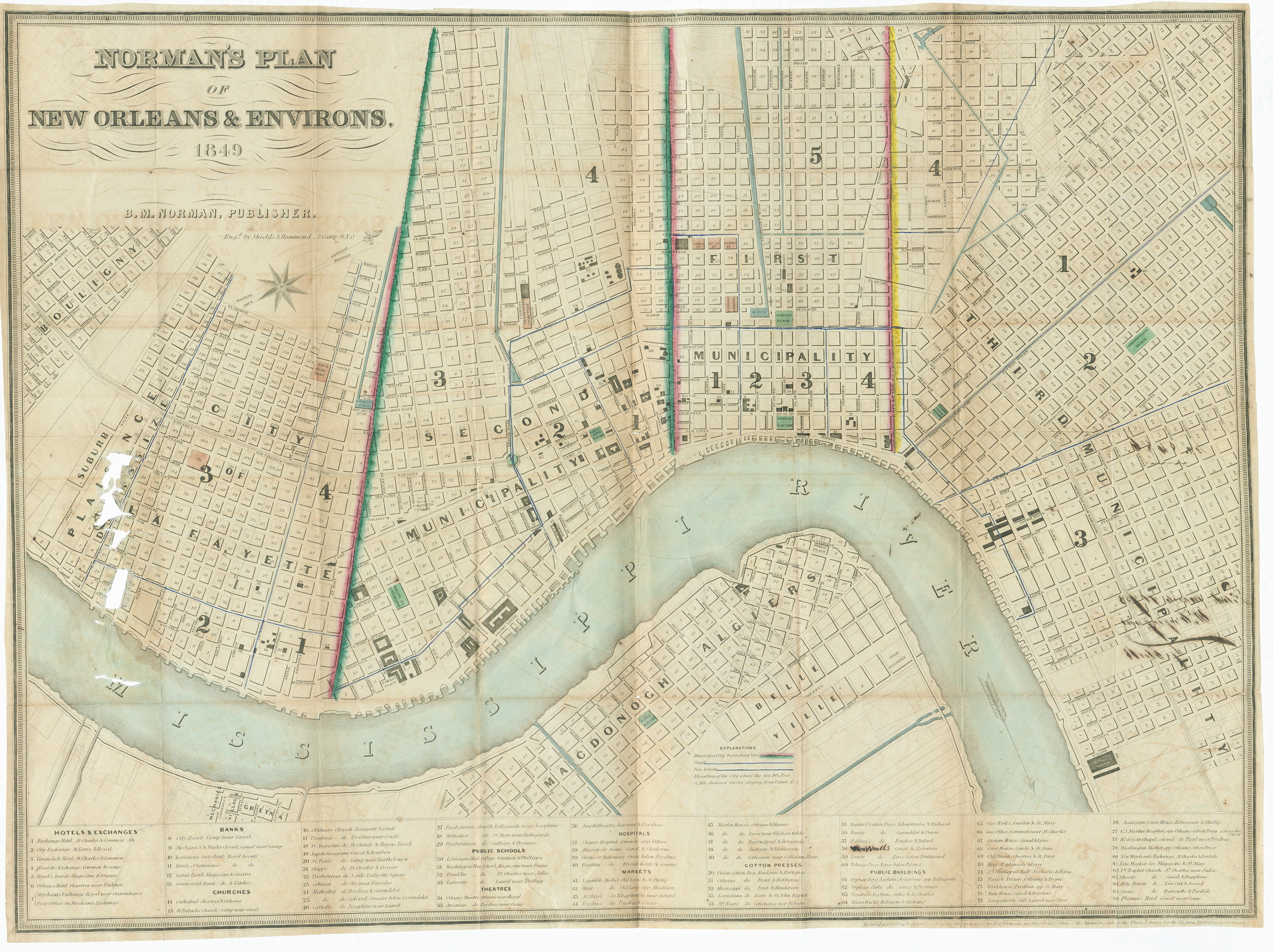General Council, Municipality Period
Scope and Contents
The records of the General Council of the Municipality period include:
- An Inventory of the Archives
- Official Proceedings
- Ordinances and Resolutions
- Messages for the Mayor
Dates
- Creation: 1830-1852
Conditions Governing Access
Available on microfilm to registered researchers by appointment. Request by call number. Originals are closed for research.
Requesting Materials
Conditions Governing Use
Reproduction or use of materials is prohibited without the permission of the City Archives & Special Collections. Please review the Archives' Permission to Publish note.
Biographical / Historical
During the period from 1836 to 1852, the city was legally divided into three separate municipalities (the original French/Spanish city was the First Municipality, the newer "American" section was the Second, and the area to the east of the "old city" was the Third). While there remained a single Mayor for the entire city, most other functions were exercised by separate agencies within the individual municipalities. Thus there was a Council for each municipality, as well as a General Council with authority in matters not delegated to the specific bodies. Similar arrangements existed for fiscal agencies and for other offices, such as surveyors, attorneys, and police department. In 1852, the three municipalities, along with the separate City of Lafayette, were consolidated into a new government for the City of New Orleans.
Section 20 of the 1836 city charter provided that, on May 31 of each year, and whenever requested by the Mayor or two of the municipality councils, there would be a meeting of the aldermen of the three councils, "when matters of general interest shall be discussed and decided upon." The Recorder of the First Municipality presided at these General Council meetings. Only specific powers were granted to the General Council; all other powers belonged to the individual municipality bodies. The General Council was given the power to:
- set a uniform wharfage rate for the city
- set a uniform drayage rate, taxes on vehicles, and rates of ferriage
- fix uniform license fees for pedlars, tavern keepers, and other specified occupations
- fix the salaries of the Mayor and the Secretary of the General Council
- make regulations for the management of the City Guard
- enact general police regulations, to be uniform in all parts of the city
The General Council was also to continue to exercise powers enjoyed by the its predecessor, the Conseil de Ville, relative to the various private companies whose charters provided for actions by the city. This system of government remained in effect until the consolidation of the city as a single body in 1852. In the consolidated city:
- The First Municipality became the Second Municipal District
- The Second Municipality became the First Municipal District
- The Third Municipality became the Third Municipal District
Extent
8 Volumes (available on 3 rolls of microfilm)
Language of Materials
English
Subject
- Office of the Mayor -- 19th century (Organization)
- Title
- General Council records
- Author
- bsilva
- Date
- 2/4/2023
- Language of description
- English
- Script of description
- Latin
- Edition statement
- based on finding aid created by the LEH
Repository Details
Part of the City Archives Repository
City Archives & Special Collections
219 Loyola Avenue
New Orleans LA 70112
504-596-2610
archivist@nolalibrary.org

